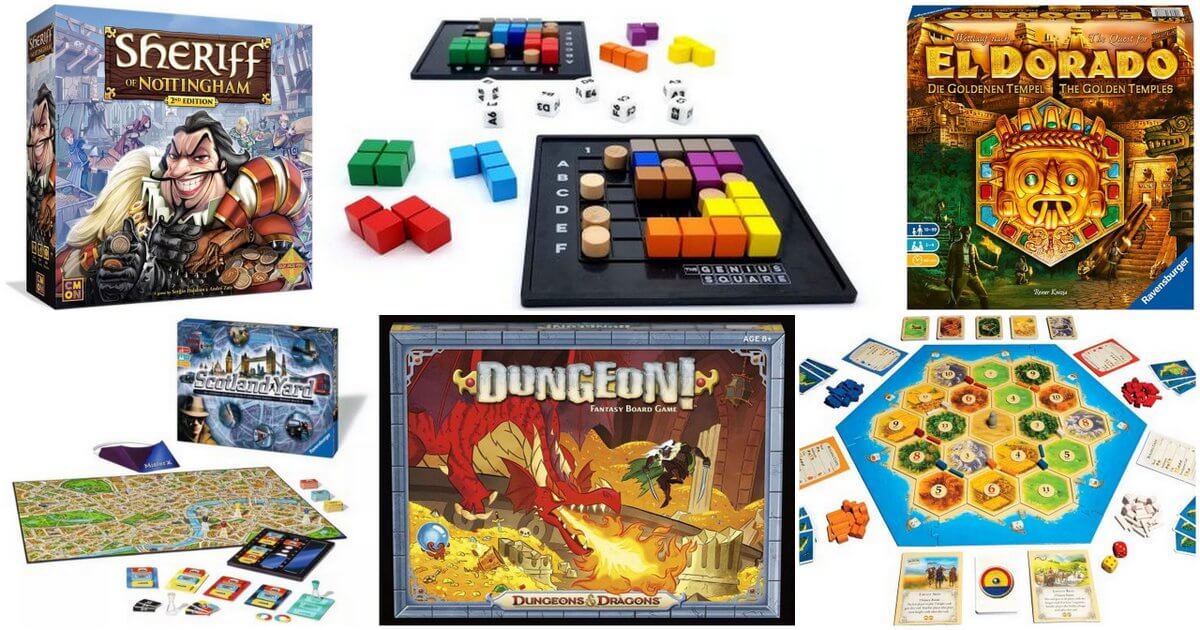Being a fan of board games is easier and more enjoyable if you actually have friends to play with. Sometimes this means going out and recruiting people to join the hobby. But actually inspiring interest from others can be a delicate art that requires careful planning and consideration. Here are some easy tips for how to teach a board game to help you in your quest to bring more players into the fold.
Tip #1: Know Your Audience
Have you ever browsed for products on Amazon, only to later see ads for similar products being blasted at you on other websites? Targeted marketing may seem creepy, but advertisers continue to employ the strategy because it works so well. Knowledge is power, and if you understand your audience and what they want, you have a better chance to get them interested.
When you're trying to get a friend to play a with you, you're selling experience of board games. Like the online advertising example, success is linked to knowing the personality and interests of the person you approach with a game.
- What is their attention span?
- Do they seem more analytical, or social?
- Are there any genres that excite them?
Answer these questions to narrow down the best game to present to a new player. It might be tempted to just pick something you like, but it's important to accommodate your audience so they have a fun and memorable experience. Plus it builds trust—if they like what you suggest, they might try more advanced games in the future.
This gets a little more complicated when you are faced with a larger group. Each person who enters the equation is a new variable. In general with groups, look for games that promote social interaction, creativity, and laughter.
Tip #2: Know Your Environment
For the sake of this article, I define environment broadly to include location, as well as the time of day and general mood of the group.
If it’s your birthday party, go ahead and bust out whatever game you want, you probably won’t hear too many complaints. But if you are at someone else’s birthday party, consider your approach carefully. The environment in which you present a new game is critical, and it will have a massive effect on how your players judge the experience.
I once watched as a clueless game enthusiast tried to teach Dominion at a bustling coffee shop with minimal table space. It was disastrous. He had to shout over the din of chattering customers to explain complex card interactions, all while his poor players were forced to juggle both coffee cups and game cards (there wasn’t enough table space to accommodate both).
Ok…truthfully, that clueless fool was ME. I was so enamored with a game I loved I forgot to account for the environment. But it's a good lesson to think about the environment, whether you're home on a Friday night, at your local game shop, or at a party at a friend's house.
Tip #3: Know the Game
Your players are gathered. The setting is perfect. The time is right. Everyone is leaning in, ready to hear you explain how to play the game you brought…
…this is NOT the moment to crack open the rule book for the first time!
Nothing sucks the life out of a game night quicker than waiting around as the host scrambles to learn the rules. When the smartphones come out and people start walking away from the table, you’ve already lost.
If you want to leave a good impression it’s best to start by teaching games you already know inside and out. A confident explanation commands attention and builds positive momentum. However, if you don’t know your game, then reading the rule book beforehand is mandatory.
For teaching rules to group, YouTube is great. Just do a search for "How to play...", and you'll likely find dozens of videos to help you learn almost any game.
Tip #4: Help as Needed
If you’ve effectively explained the rules of the game, your players should be well prepared to venture into the experience on their own.
The truth is, everyone learns differently. While one of your players may be cruising along after a single turn, another may need constant reminders of their goals and choices in the game. As the host, you must be ready to juggle the needs of your players constantly and you must do so in a tactful manner that doesn’t rob anyone of a positive experience.
Games are one of the few forms of entertainment that allow you to interact and affect the outcome with your own choices. The more interesting and meaningful choices a game offers, the better a game is considered to be. For this reason, it is important that you never directly make choices for your players, even if they are flailing. It robs them of the joy of experimenting on their own.
If someone is having trouble understanding what to do, try to reiterate the main goal of the game and provide some examples for how this goal can be accomplished. Don’t be afraid to give away your personal strategy so they can clearly see some of the options available to them. It is more important that your players enjoy their first play through than it is that you win the game (competitive play can commence in later plays when everyone is on the same page).
Inversely, be careful not to give away the strategies of other more competent players at the table unless they offer up advice themselves. Forcing an entire table to play at the level of the least competent player can spoil the experience.
Finally, be aware of your tone of voice. Avoid talking to anyone as if they were a toddler. If you make someone feel stupid, they will not want to play games with you.
Tip #5: Have a Backup Plan
Sometimes, the best laid plans go awry.
You may think you’ve brought the perfect gateway game to capture your group, only to find that once the game is in progress things start to fall apart.
Maybe people are bored by the game. Perhaps it’s too confrontational, or not interactive enough. Maybe the game’s complexity isn’t suited for the group’s attention span. Whatever the reason, pushing through to the end isn’t always the best option.
At some point you may need to read the room carefully. Ask everyone if they would be happier switching gears to something else. In these moments, keeping an upbeat attitude is important. Nothing has been ruined and new opportunities await. If the group seems unsure how to answer and are looking for leadership, make an executive decision and pivot fast. In these scenarios it’s smartest to downshift to a game that is light and easy, or something everyone is already familiar with.
Regardless of any missteps that may happen, if the overall experience leaves a positive impression on your players, you may successfully gain some new gaming partners to invite to future gatherings!





